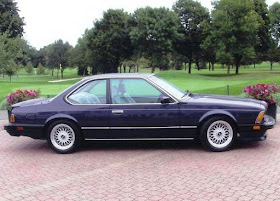The
Porsche 959 is Show or Display. It is the reason that this exemption exists in the first place. Back in 1999, when I was working at
MotoRex, we spoke with people at the NHTSA about the rule, and heard a bit of insight into what would eventually become Show or Display.
After the rule went into effect, I actually had the chance to check out several
Porsche 959's at
G &K Automotive Conversion/CEE Lab's in Santa Ana, CA.
I can't say that I am a huge Porsche 911 fan, I have driven a lot of them over the years, and probably some of the fastest cars I have ever driven were modified Porsches. They always felt a little strange. The left hand key, the shifter location and throw. The pedals coming up out of the floor. There is something about them that just doesn't seem to fit me. The run of the mill 911 appeals to me about as much as a beige Toyota Camry. The 959 is a special car. The 959 is a very special car. There are so many very cool, very advanced items on the car, it really goes above and beyond the technologically significant part of Show or Display. 337 total cars were made.
 |
| Porsche 959 turbocharger and intercooler |
"The powerplant, a
twin-turbocharged six-cylinder
boxer engine with an air-cooled block and water-cooled heads, displaced 2.85 liters, about half a liter less than a contemporary 911 engine. It was coupled to a unique manual gearbox offering 5 forward speeds plus a "G" off-road gear, as well as reverse. The motor had originally been developed for the "
Moby Dick" race car and then been redeveloped slightly for the short-lived Porsche Indy Car and several other projects before being "tweaked" a last time for use in the 961, the 959's racing counterpart.
 |
| Water cooled heads on Porsche 959 |
The
water-cooled cylinder heads combined with the
air-cooled block, 4-valve heads and sequential turbochargers allowed Porsche to extract 331 kW (444 hp) from the compact, efficient and rugged power unit.
[4] The use of sequential twin turbochargers rather than the more usual identical turbochargers for each of the two cylinder banks allowed for smooth seamless delivery of power across the engine RPM band, in contrast to the abrupt on-off power characteristic that distinguished Porsche's other turbocharged engines of the period. The engine was used, virtually unchanged, in the 959 road car as well."

The turbocharger/engine setup was very unique. Parallel sequential turbocharging. Below 4,000 rpms all the exhaust gases were fed to a single turbo, between 4000 and 4200 rpms the second turbo started to be brought into the mix. Above 4200 rpms, the turbos operated in parallel to provide up to 0.9 bar of boost. Fairly complicated, but they got the results they wanted with 1980's turbo technology. They added a lot of area under the curve, eliminating a a lot of the
"turbo lag" that gave the Porsche turbo a bad reputation.
 |
| Show or Display Porsche 959 |
"In an attempt to create a rugged, lightweight shell, Porsche adopted an
aluminium and
Aramid (
Kevlar) composite for
body use along with a
Nomex floor, instead of the
steel normally used on their production cars.
[5] The vehicle's weight of 3,190 pounds (1,450 kg) helped to achieve its high performance level."
The all wheel drive system in the Porsche 959 was also very special. There have been lots of rumors over the years, that the
ATTESA system(all wheel drive) in the
Nissan Skyline GT-R was based off the Porsche 959 all wheel drive. Mostly rear wheel drive, combining the best features of all wheel drive, and the best features of rear wheel drive into a single platform. The
Nissan Skyline GT-R debuted with
ATTESA in 1989.
 |
| Flat bottom of the Porsche 959, helping to improve aerodynamics |
"The 959 also featured Porsche-Steuer Kupplung (PSK) which was at the time the most advanced all-wheel-drive system in a production car[
citation needed]. Capable of dynamically changing the
torque distribution between the rear and front wheels in both normal and slip conditions, the PSK system gave the 959 the adaptability it needed both as a race car and as a "super" street car. Under hard
acceleration, PSK could send as much as 80% of available power to the rear wheels, helping make the most of the rear-traction bias that occurs at such times.
[6] It could also vary the power bias depending on road surface and grip changes, helping maintain traction at all times. The dashboard featured gauges displaying the amount of rear differential slip as well as transmitted power to the front axle"
 |
| Magnesium wheels with run flat tires. Run flats in 1987. |
3190 lbs, 444 hp, all wheel drive. 0-60 mph in ~3.6 seconds, ~11.9 in the quarter mile, 195 mph top speed. It was "the" supercar for 1986, 1987, 1988. However, the current 911 Turbo makes more power, and is faster, however it did have a couple of years to catch up. Overall the Porsche 959 was a car far advanced for its time, and fit's well into the Show or Display exemption. Now they are
25 years old, or near 25 years old. They are over 21 years old and EPA exempt in their original configuration.
Source:
Wikipedia,
Boost Instruments.com, and my own photos
HELP
HOW YOU MAY APPLY FOR PERMISSION TO IMPORT
















